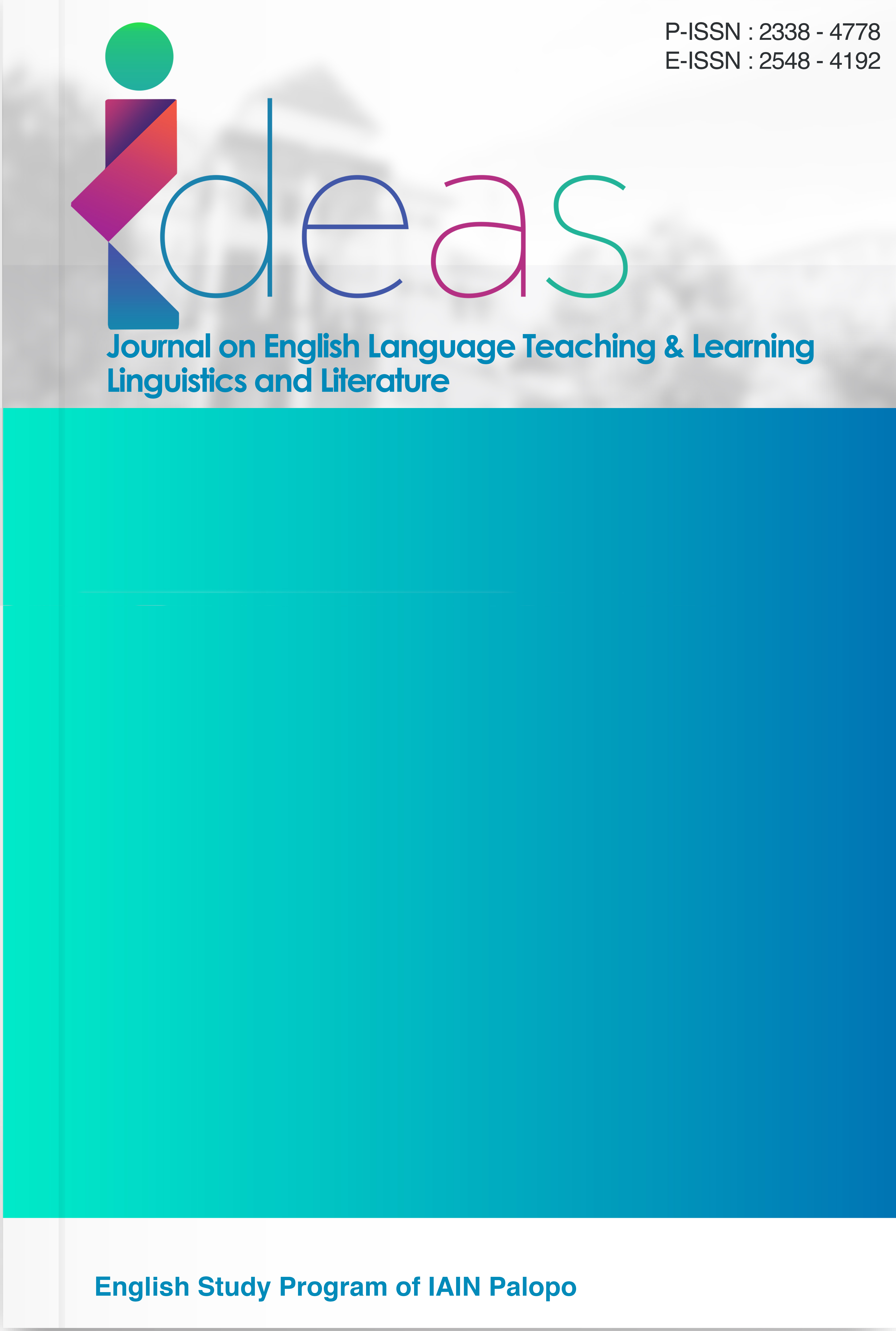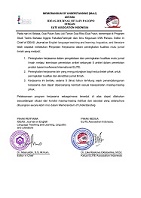An Analysis of Intra-Sentential Code Mixing in the YouTube Podcast Video by Timothy Ronald Featuring Agatha Chelsea
DOI:
https://doi.org/10.24256/ideas.v13i2.7812Keywords:
Bilingualism, Code mixing, Intra-sentential, Sociolinguistic, YouTube Podcast.Abstract
This study investigates the phenomenon of intra-sentential code mixing in the YouTube podcast video by Timothy Ronald featuring Agatha Chelsea, titled "Misi Membangun 1000 Sekolah ft Agatha Chelsea". Code mixing, especially within a single sentence, is a common phenomenon in casual spoken interactions among bilingual speakers. This study focuses on identifying the various forms and communicative purposes of intra-sentential code mixing used by the speakers. A qualitative descriptive method was employed, and the data were obtained through observation and transcription of the YouTube podcast. The analysis is based on Hoffman’s theory (1991), which highlights several reasons for code mixing, including discussing certain themes, repeating for explanatory purposes, articulating personal identity, interjection, and emphasizing particular ideas. The findings show that there are 10 instances of intra-sentential code mixing, where Indonesian and English are frequently combined to enhance clarity, fluency, and emotional emphasis. It can be concluded that intra-sentential code mixing is not only a linguistic habit but also a strategic tool for effective communication in digital media, especially among bilingual young adults. This research contributes to broader discussions in digital communication studies by illustrating how code mixing reflects identity, audience engagement, and linguistic creativity.
References
Adnyasuari, N. P. D., Pratiwi, P. A. A. S., & Putra, I. K. S. (2024). An analysis of intra-lexical code-mixing on a YouTube podcast channel. Elysian Journal: English Literature, Linguistics and Translation Studies, 4(2), 1–10. Universitas Mahasaraswati Denpasar.
Aini, A. F., Melyana, M., Wulandari, S., Cahyani, Y. L., & Nargis. (2025). An analysis of code mixing used by Bagus Muljadi on the podcast Makna Talks channels. Variable Research Journal, 2(1), 1–10.
Dewi, P., & Sari, D. (2022). Perception of Digital Storytelling in Overcoming Fear of Speaking English through Interdisciplinary Project of Gender Issues. IDEAS: Journal on English Language Teaching and Learning, Linguistics and Literature, 10(2), 1635–1642. doi:https://doi.org/10.24256/ideas.v10i2.2748
Fishman, A. Joshua. 1972. Language Sociocultural Change. California: Stanford University Press.
Hartono, I. (2021). Code-mixing types and reasons among Instagram users. Budapest International Research and Critics Institute-Journal (BIRCI-Journal): Humanities and Social Sciences, 4(2), 2982–2992. https://doi.org/10.33258/birci.v4i2.1872
Hoffman, C. 1991. An Introduction to Bilingualism. New York: Routledge Taylor and Francis Group.
Juliarta, I. M., & Suardana, I. P. E. (2025). An analysis of intra-sentential code mixing found in Aneka Yess! Magazine. International Journal of English Learning and Applied Linguistics (IJELAL), 5(2), 108–116. https://doi.org/10.21111/ijelal.v4i2.13790
Muysken, P. (2000). Bilingual Speech: A Typology of Code Mixing. Cambridge University Press.
Nalantha, I. M. D., Suwastini, N. K. A., Susanthi, I. G. A. A. D., Wiraningsih, P., & Artini, N. N. (2021). Intra-sentential and intra-lexical code mixing in Nessie Judge’s YouTube video entitled “Lagu Populer + Pesan Iblis Tersembunyi.” Retorika: Jurnal Ilmu Bahasa, 7(2), 166–171. https://doi.org/10.22225/jr.7.2.3748.166-171
Sabrila, R., & Apoko, T. (2022). The Effectiveness of Podcasts on Listening Skills for Vocational School Students. IDEAS: Journal on English Language Teaching and Learning, Linguistics and Literature, 10(2), 1177-1186. doi: https://doi.org/10.24256/ideas.v10i2.2897
Sidabutar, K. (2022). Grice's Types of Maxims in the "Willoughbys" Movie. IDEAS: Journal on English Language Teaching and Learning, Linguistics and Literature, 10(1), 326-337. doi:https://doi.org/10.24256/ideas.v10i1.2661
Tyas, N. (2022). Students' Perception of Self-Directed Learning (SDL) in Learning English by Using YouTube Videos. IDEAS: Journal on English Language Teaching and Learning, Linguistics and Literature, 10(2), 1307-1314. doi: https://doi.org/10.24256/ideas.v10i2.3208
Violita, V., & Cholsy, H. (2022). Speech Acts Equivalence of Audiovisual Translation on the Enola Holmes Netflix Movie Subtitle. IDEAS: Journal on English Language Teaching and Learning, Linguistics and Literature, 10(1), 209-225. doi: https://doi.org/10.24256/ideas.v10i1.2589
Wardhaugh, Ronald. 1986. An Introduction to Sociolinguistics. Great Britain: Hrtnolls Ltd, Bodmin.
YouTube. 2025. Timothy Ronald. Retrieved from
Downloads
Published
Issue
Section
Citation Check
License
Copyright (c) 2025 Ni Komang Anik Supadmi, Putu Gede Budiartha

This work is licensed under a Creative Commons Attribution-ShareAlike 4.0 International License.
Authors retain copyright and grant the journal right of first publication with the work simultaneously licensed under an Attribution-ShareAlike 4.0 International (CC BY-SA 4.0) that allows others to share the work with an acknowledgement of the work's authorship and initial publication in this journal.
Authors are able to enter into separate, additional contractual arrangements for the non-exclusive distribution of the journal's published version of the work (e.g., post it to an institutional repository or publish it in a book), with an acknowledgement of its initial publication in this journal.
Authors are permitted and encouraged to post their work online (e.g., in institutional repositories or on their website) prior to and during the submission process, as it can lead to productive exchanges, as well as earlier and greater citation of published work (See the Effect of Open Access)




